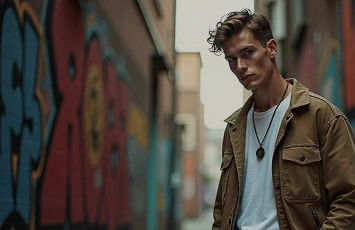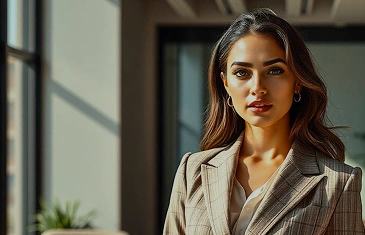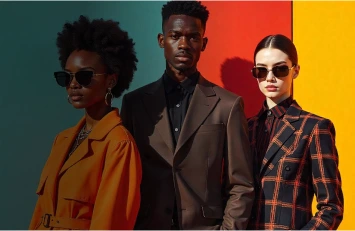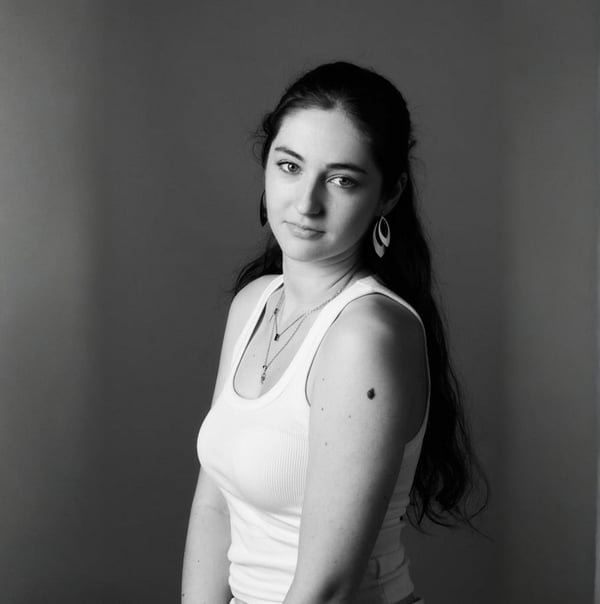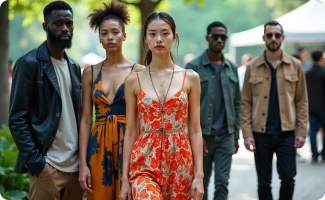
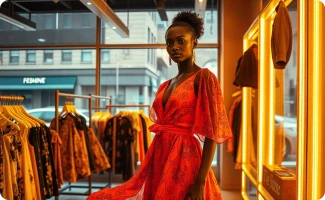
Fashion Sketch Templates for Your Next Collection
Table of Contents
- What Are Fashion Sketch Templates
- Why Use Fashion Sketch Templates
- Types of Fashion Sketch Templates
- Where to Find Fashion Sketch Templates
- Introducing Modelia: The Future of Fashion Template Design
- How to Use Fashion Sketch Templates Effectively
- How AI Tools Are Transforming Fashion Design
- Benefits of Using Fashion Sketch Templates
- Final Thoughts
- Frequently Asked Questions (FAQ)
Fashion design begins with a sketch. It’s where ideas take shape, silhouettes are tested, and creative visions are first brought to life. Whether you are a professional designer or a student, having ready-to-use fashion sketch templates can dramatically speed up your workflow and help you focus on creativity rather than repetitive outlines.
These templates act as the foundation for building garments, allowing you to visualize your collection with structure and precision. In this guide, we’ll explore what fashion sketch templates are, why they’re essential and where to find the best free and premium options to use in your next project.
We’ll also look at how AI tools like Modelia are redefining how designers create sketches, bringing a new level of efficiency and artistic freedom to the process.

What Are Fashion Sketch Templates
Fashion sketch templates, also known as fashion design templates, are pre-drawn outlines of the human figure (commonly called croquis) or basic garment structures that designers use as a base for sketching clothes. They serve as a creative starting point, allowing you to focus on clothing design details rather than redrawing body proportions each time.
Templates can be blank outlines of a model’s body, front and back views, or even more detailed sketches that show poses, body shapes, and garment drapes. They’re widely used in fashion illustration, garment development, portfolio presentations, and digital fashion design.
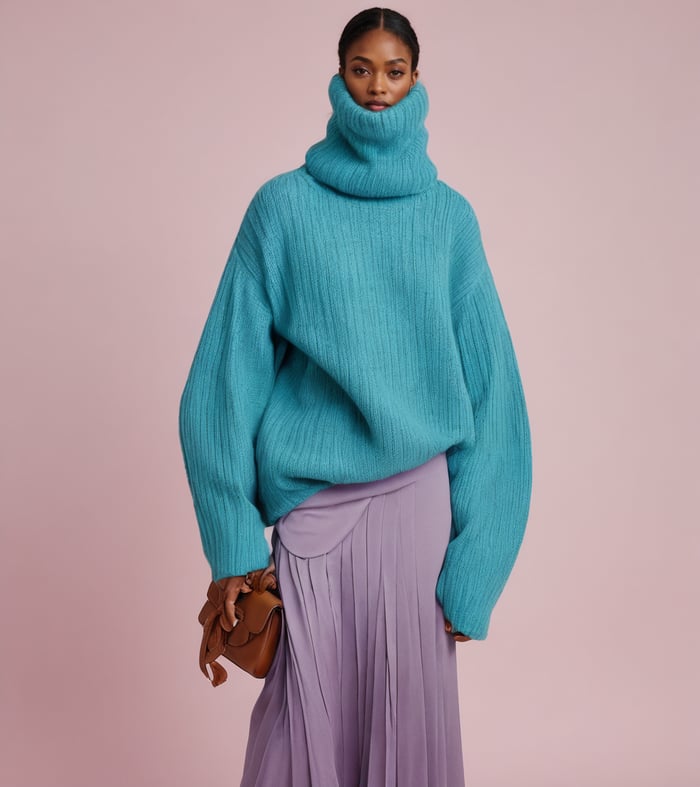
Why Use Fashion Sketch Templates
Fashion sketching is one of the most creative yet time-consuming parts of the design process. Every new idea requires a base figure, and drawing it repeatedly can take hours. Templates solve that by providing a consistent, proportional structure that saves time and keeps your work cohesive.
Here’s why every designer should use fashion sketch templates:
Save time and effort. Instead of drawing new figures from scratch, you can focus directly on designing garments, patterns, and color combinations.
Ensure accurate proportions. Templates are pre-measured, maintaining correct human body proportions across designs.
Improve presentation. Consistent sketch bases make portfolios look professional and easy to review.
Enhance creativity. By removing technical repetition, you have more time to experiment with silhouettes, textures, and embellishments.
Ideal for beginners. Templates are great learning tools for students who are still developing drawing skills.
Templates don’t replace your creativity, they amplify it. They act as a reliable framework that supports your artistic direction.

Types of Fashion Sketch Templates
There are many types of fashion design templates, each designed for specific purposes. Understanding them helps you choose the right one for your work.
Croquis Templates
These are basic human figure outlines used for sketching garments. They show the body in neutral or dynamic poses and come in male, female, and child forms. Croquis templates are perfect for creating early design drafts and exploring proportions.
Garment Templates
These focus on clothing items rather than figures. They include outlines of dresses, pants, coats, and accessories that designers can fill in, modify, and customize for different styles.
Technical Sketch Templates
Also called flats, these templates represent garments in a flat, 2D technical format. They’re essential for production sheets, manufacturing specs, and pattern development. Technical sketches include details such as seams, stitches, and zippers.
Digital Fashion Templates
These templates are optimized for use with digital design software like Adobe Illustrator, Procreate, or Photoshop. They often come as vector files, allowing easy resizing, color adjustments, and editing.
Each type plays a different role in the design process, from creative brainstorming to production-ready documentation.
Where to Find Fashion Sketch Templates
Designers can find fashion sketch templates from a variety of sources, both free and paid. The key is to choose templates that match your design style and technical needs.
Free Online Resources
Many websites offer free fashion templates for educational and personal use. These include downloadable PDFs and editable vector files that can be printed or used digitally. Examples include:
Fashionary
Template.net
Designers Nexus
Pret a Template
Free templates are great for practice, experimentation, and classroom work.
Premium Template Libraries
If you need more variety, premium libraries provide professional-grade croquis and technical sketches. They are ideal for design studios, brand development, and portfolio presentations. Paid templates often include extended usage rights and come in editable formats for software like Illustrator or Sketch.
AI-Powered Template Creators
A growing number of designers now use AI-driven platforms to generate custom fashion design templates tailored to their style. These tools can automatically create figures, poses, or garments based on text prompts or previous collections, making them far more dynamic than static templates.
This is where Modelia stands out as one of the most advanced AI fashion platforms available today.
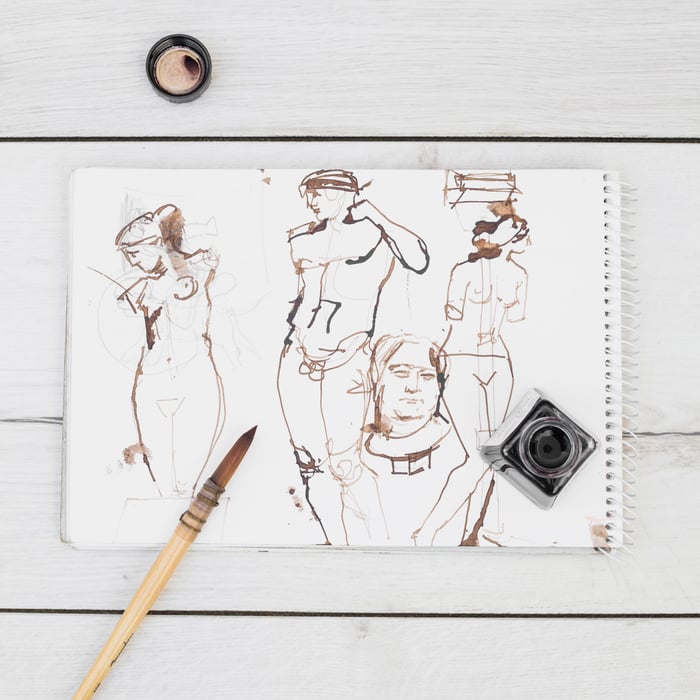
Introducing Modelia: The Future of Fashion Template Design
Traditional templates are useful, but AI has transformed what’s possible in the design world. Modelia, a leader in AI for fashion and creative industries, takes this concept further with tools that help designers generate customized fashion sketch templates in minutes.
Modelia’s intelligent AI understands design context, proportions, and creative intent. Whether you need a simple croquis, a technical sketch, or a conceptual fashion pose, Modelia can generate it instantly, adapting to your project’s needs.
Why Modelia Stands Out
AI Customization: Instead of choosing from static outlines, you can create templates with unique poses, styles, and silhouettes based on your artistic direction.
Realistic Proportions: Modelia’s templates are designed with accurate anatomy and movement, ideal for fashion illustration and draping visualization.
Digital Integration: Generated templates are compatible with major design platforms such as Adobe Illustrator, Photoshop, and CLO3D.
Time Efficiency: Designers save hours of manual sketching, freeing up time for concept development and creative exploration.
High-Resolution Output: All templates are created in HD format, ensuring professional quality for portfolios and presentations.
By integrating Modelia into your workflow, you no longer need to rely on generic templates. You can produce original, high-quality sketches that align with your brand’s identity and visual storytelling.
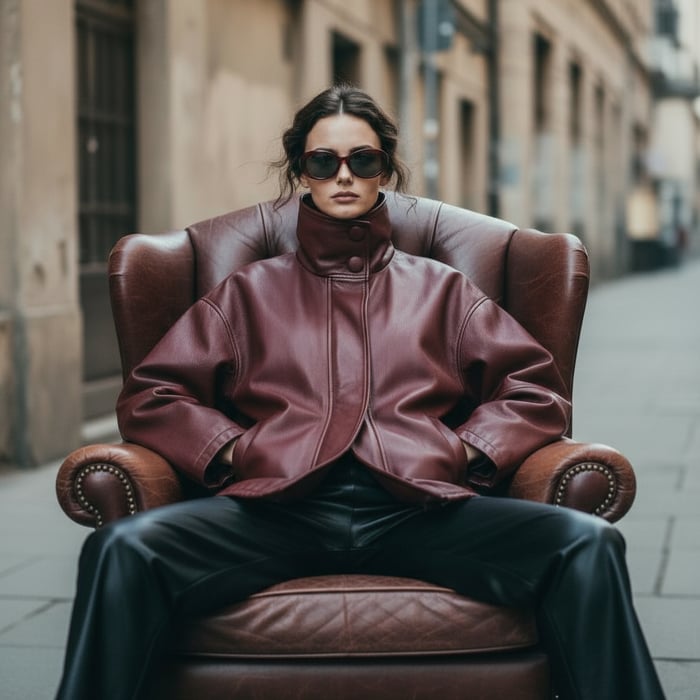
How to Use Fashion Sketch Templates Effectively
Once you have your templates ready, knowing how to use them efficiently can take your work to a professional level.
Start with a Clear Vision
Before sketching, decide what you want to create. Gather inspiration, references, and color palettes. Templates help you translate your ideas faster once your direction is clear.
Use Layers in Digital Design
If you are working digitally, use layers to keep your template separate from your designs. This makes it easier to adjust clothing details, colors, and textures without affecting the base figure.
Customize for Each Collection
Change poses, proportions, or features slightly between collections to match the theme or target audience. Modelia can help by generating custom croquis that fit your collection’s aesthetic.
Combine with Technical Drawings
Pair your creative sketches with technical templates to show construction details. This balance between artistry and precision is essential for production and presentations.
Maintain a Consistent Format
When building portfolios, keep templates consistent in scale and style. Consistency reinforces professionalism and helps reviewers focus on your designs rather than formatting differences.
How AI Tools Are Transforming Fashion Design
Artificial intelligence is reshaping the fashion industry, from trend forecasting to digital sampling. In sketching and concept creation, AI saves time while maintaining creative control.
With AI-based systems like Modelia, designers can instantly produce fashion design templates suited to specific garment categories or body types. This technology allows experimentation with styles that would otherwise take hours to draw manually.
Modelia’s blend of automation and customization empowers designers to create sketches faster without losing individuality. It combines technology with artistry—an ideal balance for modern fashion workflows.

Benefits of Using Fashion Sketch Templates
When used strategically, templates bring both creative and practical benefits to every designer:
Speed and consistency: Create multiple looks quickly while keeping proportion accuracy.
Creative flexibility: Experiment with cuts, shapes, and materials over a uniform base.
Professional presentation: Ideal for portfolios, client proposals, and brand lookbooks.
Digital adaptability: Many templates are compatible with design tools like Illustrator, Procreate, or Photoshop.
Scalability: Perfect for brands producing multiple seasonal collections.
Whether you are preparing mood boards, pattern layouts, or fashion show visuals, fashion sketch templates provide the framework you need to move from idea to concept efficiently.
Final Thoughts
Fashion begins with imagination, but every idea needs structure. Fashion sketch templates provide that structure, reliable, reusable, and endlessly customizable. From croquis to digital flats, they form the backbone of every designer’s process, bridging creativity with precision.
If you’re ready to move beyond static templates, explore Modelia, where artificial intelligence meets design intuition. With Modelia’s tools, you can create personalized sketch templates, enhance image quality, and develop full digital collections faster than ever before. It’s the perfect companion for designers who value both creativity and efficiency.
Whether you are a student building your first portfolio or an established designer planning your next collection, integrating fashion sketch templates and AI tools like Modelia will help you elevate your creative process and showcase your work at a professional level.
Visit Modelia and keep learning about fashion and AI
Frequently Asked Questions (FAQ)
1. What are fashion sketch templates used for?
They provide a base figure or garment outline to help designers draw clothing accurately and quickly. Templates ensure proportion consistency and improve workflow efficiency.
2. Are there free fashion design templates available?
Yes. Many websites like Fashionary and Designers Nexus offer free templates for personal and educational use. You can also find advanced, AI-generated templates on Modelia.
3. What formats do templates come in?
Templates can be downloaded in PDF for printing or as editable digital files (AI, PSD, PNG, SVG) for use in software like Adobe Illustrator or Photoshop.
4. Can I customize fashion sketch templates?
Absolutely. You can modify poses, outlines, or garments digitally. Tools like Modelia let you create fully customized templates based on your design goals.
5. What’s the difference between creative sketches and technical templates?
Creative sketches focus on artistic representation, while technical templates (flats) show garment details for production. Both are essential parts of the design process.
How would you rate this article:
Related Articles
- Fashion Modeling Basics: Trends, Innovations, and the Future of the Industry
- Understanding the Concept of Futuristic Elegance
- AI Photo Enlargement: Enhance Image Quality with Artificial Intelligence Technology
- Step-by-Step Guide to Changing Dress Colors Online with AI
- Ultimate Guide to Styling Streetwear for Women: From Casual to Chic
- Shopify vs Magento: Key Differences Explained
- The Best Fashion Blogs to Follow for Daily Style Inspiration
- Virtual Makeup Try-On: How AR Technology is Revolutionizing Beauty Shopping
- Best 5 Hautech.ai Alternatives to Explore in 2025
- Fashion Design with AI: All You Need to Know

